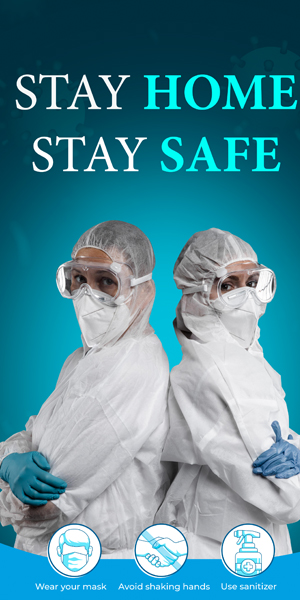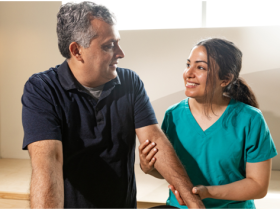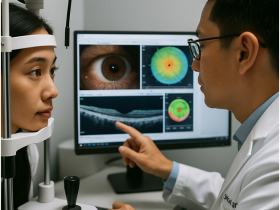Back Pain
Back pain is one of the most common reasons individuals visit the doctor or miss work, and it is a primary cause of disability on a global scale. You can take efforts to prevent or alleviate the majority of back pain episodes. If prevention fails, basic home treatment and appropriate body mechanics can frequently repair and maintain a functional back within a few weeks. Infrequently is surgery required to relieve back pain. If you’re seeking expert advice and treatment options, explore this comprehensive guide to back pain treatment in Singapore. From causes to symptoms and advanced solutions, it covers everything you need to know to regain a pain-free life.
Symptoms
Back pain can range from aching to shooting, scorching, or stabbing. In addition, the discomfort may spread down your leg or intensify as you bend, twist, lift, stand, or walk.
Causes
Frequently, back pain starts without a cause that your doctor can uncover through testing or imaging. Conditions frequently associated with back discomfort include:
- It is possible for osteoarthritis to affect the lower back. In some circumstances, arthritis in the spine can cause spinal stenosis, a disorder characterized by a narrowing of the area surrounding the spinal cord.
- Herniated or ruptured discs. The spinal discs serve as cushions between the vertebrae. The soft substance within a disc might swell or burst, causing nerve compression. However, a bulging or damaged disc can occur without back discomfort. Disk disease is frequently discovered inadvertently when spine X-rays are performed for another cause.
- If your bones become porous and brittle, painful fractures can develop in the vertebrae of your spine.
- Tendon or muscle tension. Back muscles and ligaments can be strained by repeated heavy lifting or a sudden awkward motion. Constant tension on the spine can create severe muscle spasms in individuals with inadequate physical fitness.
Risk factors
Back discomfort can affect anyone, even children and adolescents. These variables may increase your likelihood of having back pain:
- Back discomfort becomes more prevalent with age, beginning about 30 or 40.
- Certain forms of arthritis and cancer can cause back pain.
- Incorrect lifting. Utilizing the back instead of the legs can result in back pain.
- Lack of activity. Weak, underused back and abdominal muscles may contribute to back discomfort.
- Psychological disorders. Depression and anxiety appear to increase the likelihood of back pain.
- There is an increased frequency of back discomfort among smokers. This may occur because smoking induces increased coughing, which might cause disc herniation. Additionally, smoking can reduce spinal blood flow and raise the risk of osteoporosis.
- Too much weight. Additional weight increases the strain on the back.
Diagnosis
Your physician will evaluate your back and determine your ability to sit, stand, walk, and raise your legs. Your doctor may also ask you to rate your pain on a scale from zero to ten and inquire about how well you’re coping with it.
These evaluations assist in determining the source of the pain, the extent to which you can move before pain forces you to stop, and the presence of muscle spasms. Additionally, they can help rule out more severe reasons for back discomfort. If your doctor suspects that a certain condition is causing your back discomfort, he or she may request one or more of the following tests:
- Blood testing. These can assist in determining whether an infection or other illness is causing your pain.
- Bone scan. In rare instances, your doctor may utilise a bone scan to detect bone tumours or osteoporosis-related compression fractures.
- CT or MRI scans. These scans produce images that can detect herniated discs as well as issues with bones, muscles, tissue, tendons, nerves, ligaments, and blood vessels.
- Nerve studies. Electromyography (EMG) examines the electrical impulses generated by your nerves and muscle reflexes. This test can confirm nerve compression due to herniated discs or spinal canal constriction (spinal stenosis).
- X-ray. These scans reveal the alignment of your bones and whether or not you suffer from arthritis or shattered bones. These pictures alone will not reveal spinal cord, muscle, nerve, or disc issues.
Treatment
Most people’s back pain gets better on their own within a month of starting home treatments. However, each individual is unique, and back pain is a complicated issue. For many, the discomfort persists for a few months, but just a handful experience severe, permanent agony.
The use of over-the-counter pain medications and heat may be sufficient. Bed rest is not advised. Continue with as many activities as you can manage. Try light activities such as walking and daily living tasks. Stop engaging in activities that exacerbate discomfort, but don’t avoid activities out of fear. If home remedies are ineffective after many weeks, your doctor may recommend harsher medications or alternative treatments.
Medications
Depending on the nature of your back discomfort, your physician may recommend the following:
- OTC (over-the-counter) painkillers. Nonsteroidal anti-inflammatory medicines (NSAIDs) such as ibuprofen or naproxen sodium may alleviate back discomfort. Take these medications precisely as directed by your doctor. Overuse can result in major adverse effects. If OTC pain medicines don’t relieve your pain, your doctor might offer prescription NSAIDs.
- Muscle relaxants. If over-the-counter pain medicines fail to alleviate mild to severe back pain, your doctor may prescribe a muscle relaxant. Muscle relaxants can cause dizziness and drowsiness.
- Opioid-containing medications, such as oxycodone or hydrocodone, may be administered for a limited duration under medical supervision. Opioids are ineffective for persistent pain, therefore your prescription will often contain fewer than seven days’ worth of pills.
- Topical analgesic agents. Through creams, ointments, or patches, these medications administer pain-relieving chemicals to the skin.
- Some antidepressants, specifically duloxetine and tricyclic antidepressants like amitriptyline, have been demonstrated to alleviate persistent back pain regardless of their effect on depression.
Physical therapy
A physical therapist can teach you exercises to enhance your posture, increase your flexibility, and strengthen your back and abdominal muscles. Regular usage of these procedures can prevent the return of discomfort. Physical therapists will also educate patients on how to adapt their motions during an episode of back pain in order to prevent a worsening of pain symptoms while remaining active.
Surgical and other procedures
The following procedures may be used to alleviate back pain:
- Corticosteroid injections If various treatments fail to alleviate your pain and it radiates down your leg, your physician may inject cortisone, a potent anti-inflammatory drug, and numbing medication into the region surrounding your spinal cord (epidural space). A cortisone injection reduces inflammation around the nerve roots, but the pain alleviation is typically only effective for one or two months.
- Implantation of nerve stimulators Implanted devices can inhibit pain signals by delivering electrical impulses to certain nerves.
- Neurotomy with radiofrequency energy. During this operation, a small needle is placed into your skin so that its tip is close to the source of your discomfort. Radio waves are transmitted through the needle to irritate adjacent nerves, impeding the transmission of pain signals to the brain.
- If you experience unrelenting agony with radiating leg pain or gradual muscle weakness due to nerve compression, surgery may be beneficial. Typically, these procedures are reserved for the treatment of structural pain that has not responded to conventional treatments, such as spinal stenosis or a ruptured disc.
When should you see a physician?
The majority of back pain fades gradually with home treatment and self-care, typically within a few weeks. Consult a physician if your back pain:
- Causes weakness, tingling, or numbness in one or both legs
- Comes along with unexplained weight loss
- Continuing beyond a few weeks
- Is acute and unresponsive to rest
- Spreads down one or both legs, particularly if pain reaches below the knee.
Rarely, back discomfort may indicate a serious medical condition. Seek quick medical attention for back pain if it:
- Causes new bowel or bladder problems
- Presented with a fever
- Resulting from a fall, blow to the back, or another injury
You may also visit DoctorOnCall to schedule an appointment with one of our physicians for a private consultation.








Leave a Reply